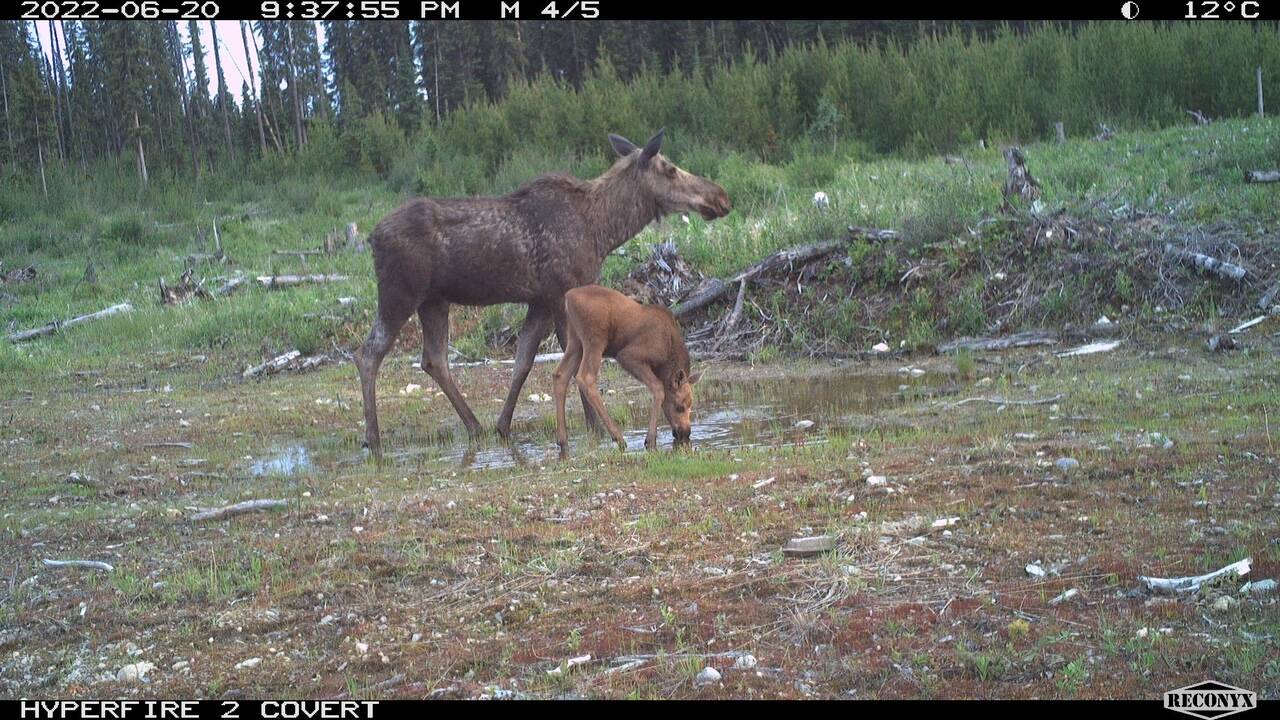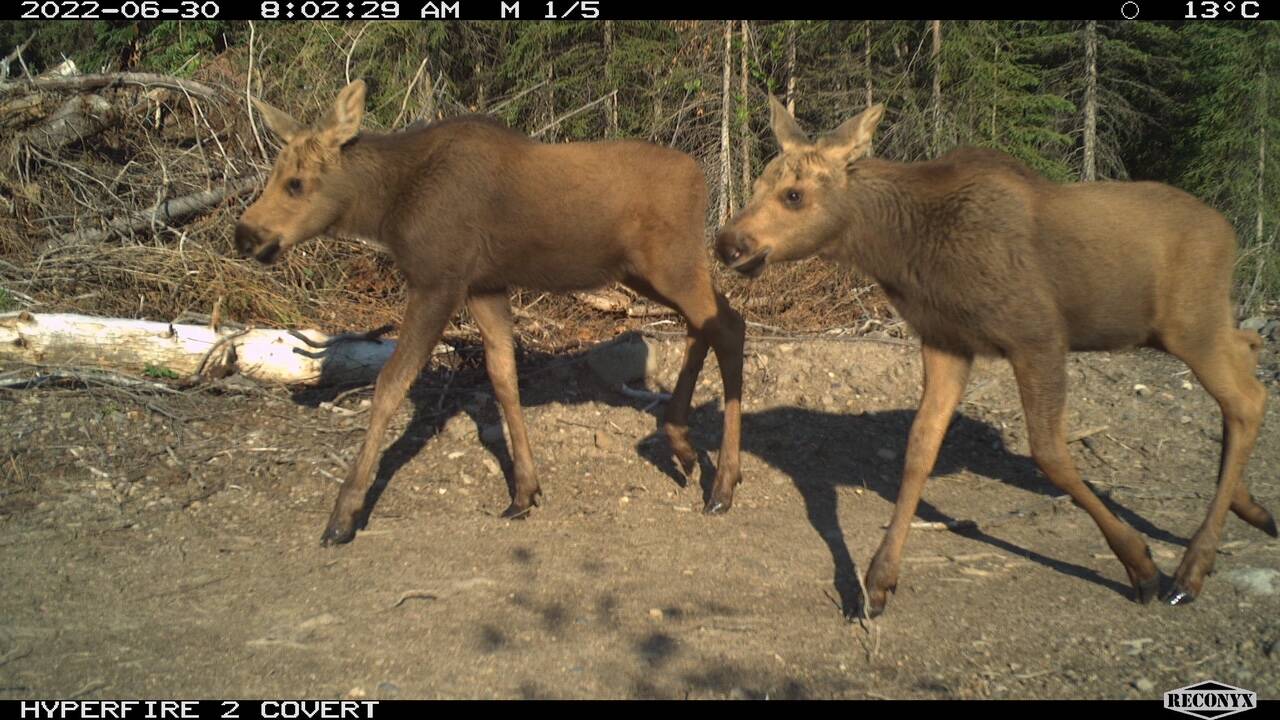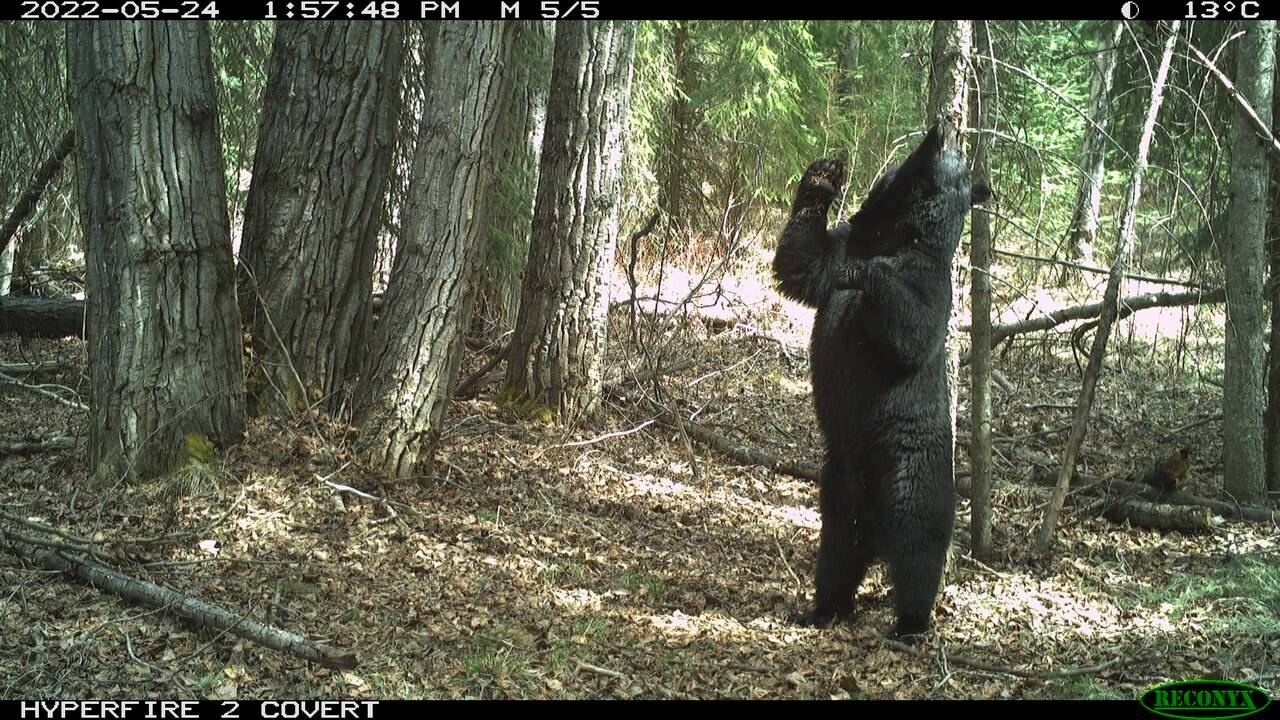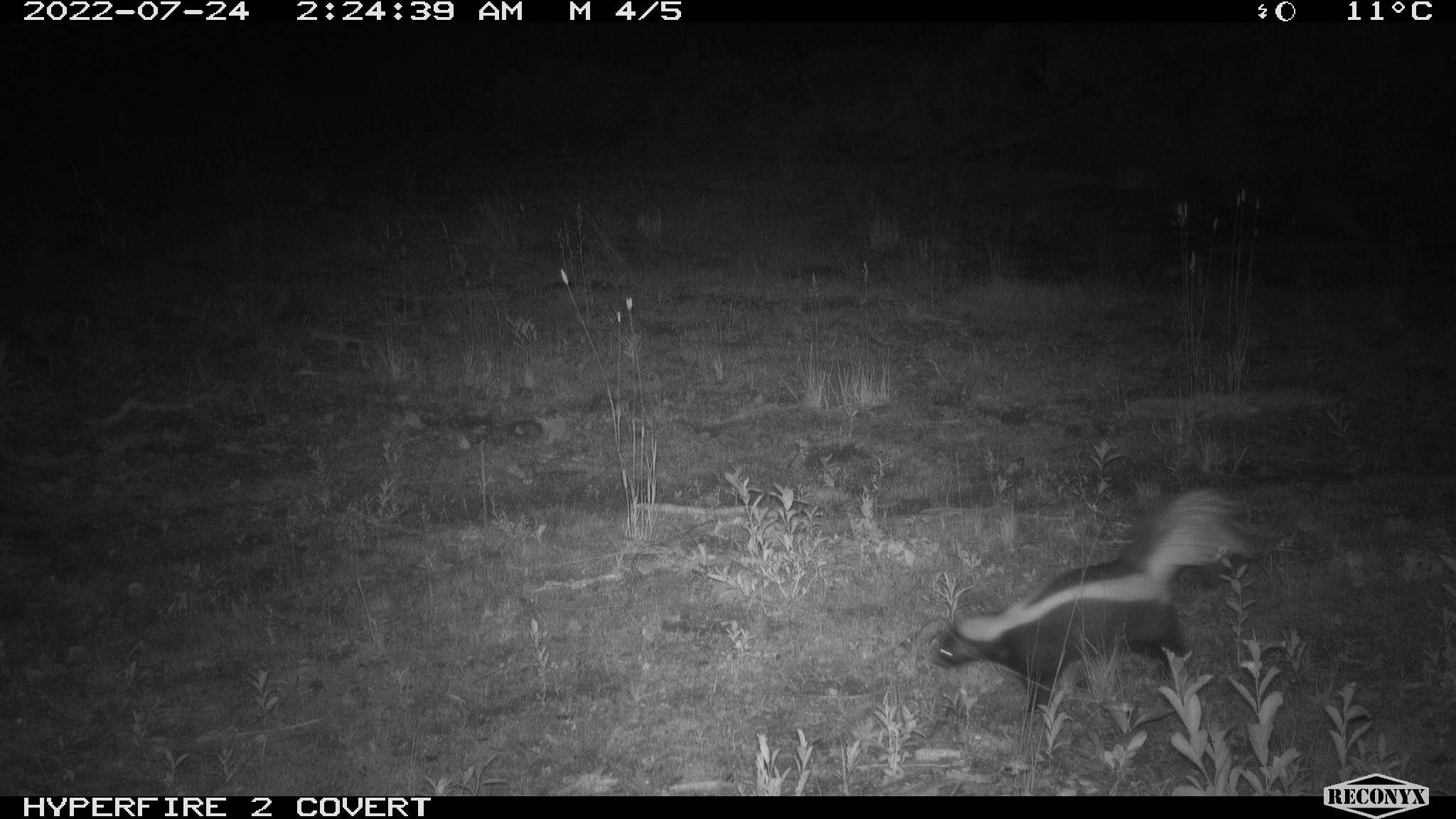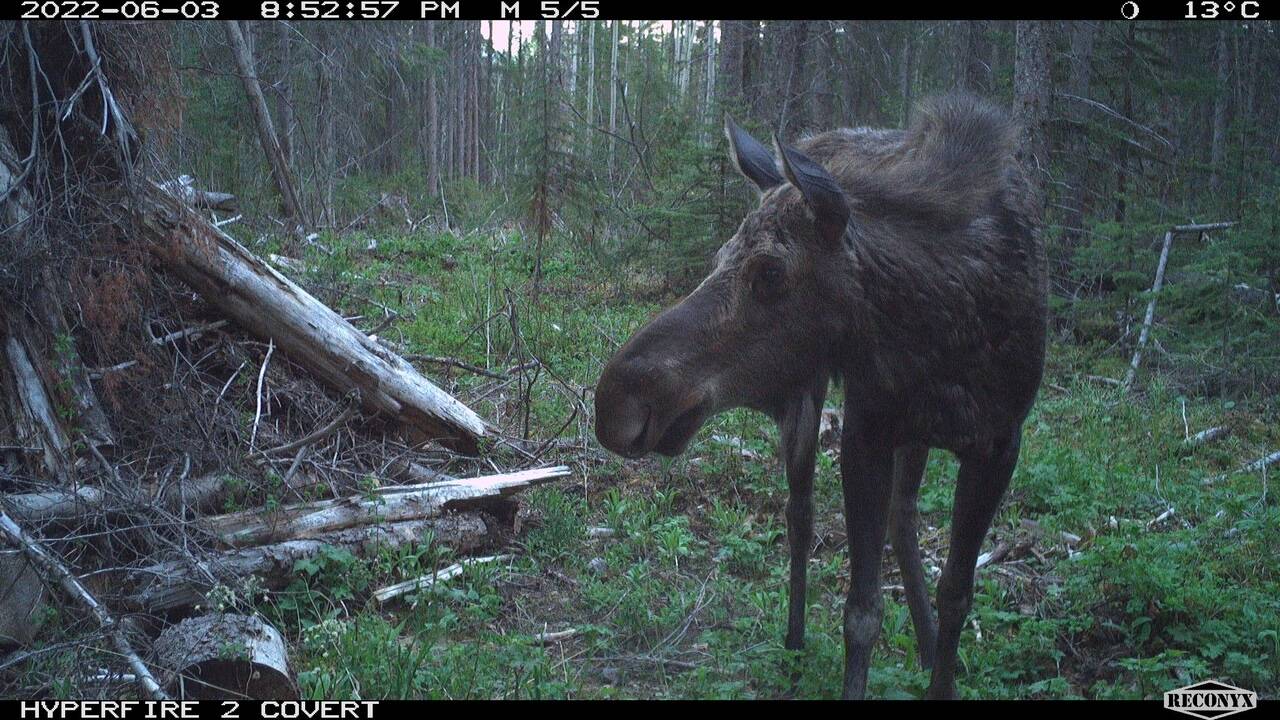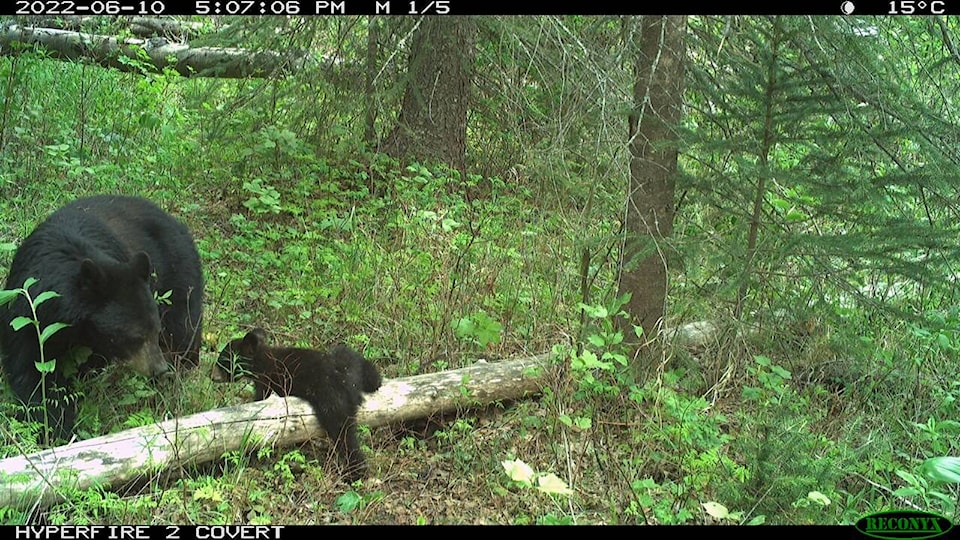Brooklyn Maher, a former Lakes District Secondary School (LDSS) student, and now an MSc student with the University of British Columbia (UBC) Okanagan, is conducting a study looking at the effects of partially harvested forests on predator species ranging from weasels all the way up to cougars and grizzly bears, in the Burns Lake Community Forest, as well as in the Houston and Smithers areas.
“Partial harvest can mean a lot of different things in forestry, so we have chosen to examine two types of partial harvesting. The first is being conducted in the Burns Lake Community Forest where curved pathways are cut from the landscape leaving 30-60 per cent of the mature forest intact. The second kind is being conducted by CANFOR where the mature trees are harvested from the blocks, but the saplings and understory vegetation are left as much as possible,” said Maher.
“We want to see how predators use these partially harvested blocks compared to mature forests and the more traditional form of clear-cutting.”
The majority of the cameras are within the Burns Lake Community Forest which spans just over 92,000 hectares. She also has cameras in surrounding crown land as well as cameras stretching westward to the Houston and Smithers areas.
Those working on the project include Maher’s MSc supervisor, Dr. Karen Hodges, at UBC Okanagan, Frank Doyle with Wildlife Dynamics consulting, one field technician over summer and two field technicians who will be hired over winter. Burns Lake Community Forest and CANFOR have helped with ideas and provided funding.
Burns Lake Community Forest’s (BLCF) contribution to this project is a donation in the amount of $23,052.51 to help offset equipment and project costs.
“We have also committed to continuing support using BLCF equipment and supplies to ensure success. Once the project is complete, we will be tabulating the total contributions,” said Frank Varga, General Manager, BLCF. “I would only add that we are extremely excited to see this field-based research project come to fruition, especially in the Burns Lake Community Forest. Brooklyn is a local high school Graduate and it’s always great to see local talent come back and do research in the backyard!”
Supporting the study is also a way for the BLCF to showcase continued commitment and effort to manage the landbase as part of the Forest Stewardship Council (FSC) certification.
“We are excited to see this project come to fruition as it will help develop key measurable and verifiable results for forest managers to support good balance decision-making when it comes to balancing the expectation of the social, economic and environmental values of community forest management,” Varga added.
So far, the research has collected images of every expected predator species except cougars. Along with the predators, the study is also analysing the images of focal prey species such as deer, moose, elk, snowshoe hare and grouse to see which species is detected in what kind of forest cover or harvest type.
“One really unexpected visitor was a skunk! We have now picked up two over the summer, one in a cut block and one in a mature forest. Another animal we always enjoy seeing is the wolverine. We have also picked up a few bear rub trees which always supply very cute photos!” said Maher.
The fieldwork for this study started in May 2022 and will continue until September 2023. Under the study, there currently are 102 active camera traps out.
“Our research is important because it is collecting data on how wildlife are reacting to us changing the landscape. Moving forward we need to find solutions for more sustainable timber harvesting practices that allow for the coexistence of both people and wildlife in our forests. Partial harvesting may help support both forestry and wildlife,” said Maher.
The ultimate aim of the study is to collect enough data to answer questions for each of the study species. After fieldwork ends, Maher will write up the results for an MSc thesis, publish scientific papers, and present the work to interested people in government and industry.
“We hope that our findings will help both wildlife and forestry in the future, finding ways to maintain habitat for wildlife while also allowing for timber harvest in our forests,” she said.
